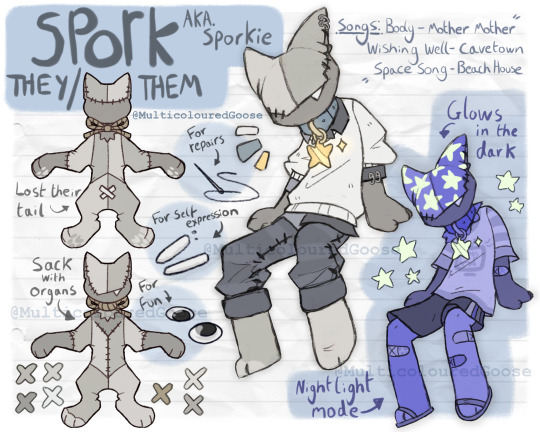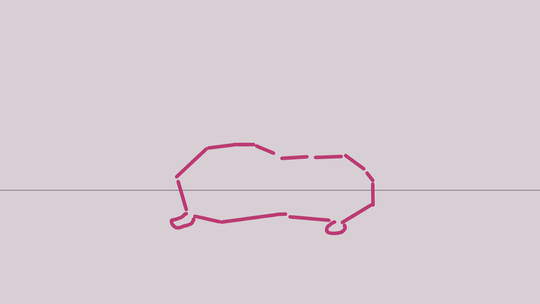#...*Flour sack
Text
I know no company has ever really truly cared about anyone under capitalism, but you know how during the Depression, flour sellers realized people were using the cloth sacks the flour came in as cheap fabric to make clothes out of, and so then they started selling the flour sacks with pretty patterns on it so people wouldn't feel embarrassed about wearing flour sack clothes?
If a company did that today they'd jack up the price of flour to obscene and beyond cost to justify the "act of helping people"
#great depression#flour sack#i'd still be fucked even if they didn't because if one granule of flour touches me I go into autoimmune hell but my point still stands#corporate greed#greedflation
43 notes
·
View notes
Text
In this video, shared July 16, Athar shows how she is reusing four sacks as a rug for her tent. She encourages others to use this method in their tent, as the flour sacks are made from water resistant and easy to clean material.


Flour sacks have a history of being upcycled. In the early through mid 20th century, flour sacks were made out of cotton. Women in poor rural communities in the United States, especially during the Great Depression, used this cotton fabric to make clothes, rather than throwing away good material. This refashioning method was also popular during WWII and in the postwar years. Check out this dress from the Smithsonian--that was a flour sack!


Athar is on Instagram @ athar_abo_rabea. She has a Go Fund Me which you can view here.
Available Go Fund Me campaigns for people whose stories have been shared on watermelllonarchive can be found in the resources post.
#athar abo rabea#gaza#palestine#free gaza#free palestine#daily life#refugees#go fund me#upcycle#diy#flour sack#home decor#upcycling
31 notes
·
View notes
Text
Had to animate a flour sack reacting to something inside of a box for my final this quarter. Originally there was an extra shot at the beginning but had to cut it for time :(
313 notes
·
View notes
Text
A friend(?)

#artists on tumblr#digital art#anthro art#oc art#original character#character art#character design#concept art#creature design#ref sheet#flour sack#space vibes
44 notes
·
View notes
Text
Putting it out in the universe and putting in the work: I want to work in the animation industry. Here’s 60+ “Flour Sack” sketches.
11 notes
·
View notes
Text
Flour Sack Pantomime for Animation II! I had to convey Anxious with Calm
2 notes
·
View notes
Video
undefined
tumblr
Sack drop, animation on paper
#animation#traditional animation#flour sack#sack animation#pencil animation#animation student#fundamentals of animation
14 notes
·
View notes
Text

Saco de Harina #3
#danisticker#uni#animation#2d animation#animación#animación 2d#flour sack animation#flour sack#animation exercise#low effort
6 notes
·
View notes
Text
youtube
2 notes
·
View notes
Text
A flour sack kicking a sand bag.
#digital drawing#digital art#doodle#digital sketch#sketch#sketch animation#simple animation#animation 2d#2d animation#animated#animation#animators on tumblr#toonsquid#fight animation#artist on tumblr#black artist#artists on tumblr#digital artist#small artist#flour sack#flour sack animation
1 note
·
View note
Text
Finally he felt himself hoisted in the air and, with a protesting squeak, was flung over Caramon's broad shoulder like a meal sack.
"DragonLance Chronicles: Dragons of Spring Dawning" - Margaret Weis and Tracy Hickman
#book quote#dragonlance chronicles#dragons of spring dawning#margaret weis#tracy hickman#hoisted#manhandling#tasslehoff burrfoot#protest#squeaking#caramon majere#shoulder#flour sack
0 notes
Text

little guy, big hop
0 notes
Text

Flour sack posing practice
1 note
·
View note
Text
Falling Flour Sack
youtube
This one wasn't for 1-hour anim, so it's actually finished!
#artists on tumblr#art#digital art#digital#animator#animation#2d animation#clip studio paint#digital animation#animators on tumblr#animation practice#flour sack#Youtube
1 note
·
View note
Text

Saco de Harina #2
#danisticker#uni#flour sack animation#2d animation#animation#animación 2d#animación#flour sack#animation exercise#low effort
0 notes
Text
youtube
The use of a flour sack as a tool for animation dates back to the early days of hand-drawn animation. In the early 20th century, animation studios were looking for ways to create more realistic movements for their characters, and animators began using everyday objects as reference points.
One of the most common objects used was the flour sack. At the time, flour was often sold in sacks made of cotton or linen fabric, which made them durable and reusable. Animators found that the way a flour sack moved and reacted to different forces was similar to the way a human body moved, making it an ideal reference point for animating characters.
In the 1920s and 1930s, animation studios such as Walt Disney Productions and Warner Bros. began using the flour sack as a key tool in their animation process. Animators would attach a small weight to the bottom of a flour sack and use it to simulate the movement of a character's body or clothing. By observing how the flour sack moved in response to different forces, animators could create more lifelike movements for their characters.
The use of the flour sack continued to evolve throughout the decades. In the 1940s, legendary animator Preston Blair used the flour sack as a basis for his instructional book "Advanced Animation," which became a seminal work in the field of animation. In the 1950s and 1960s, the flour sack was used as a teaching tool in animation schools around the world, helping to train a new generation of animators.
With the advent of computer animation in the 1980s and 1990s, the use of the flour sack declined somewhat. However, the principles of animation that were learned through the use of the flour sack continued to be used in digital animation, and the flour sack remains an important part of the history of animation.
Today, the flour sack remains a beloved symbol of the early days of animation, and animators around the world still use it as a teaching tool and reference point. Its enduring legacy is a testament to the creativity and ingenuity of early animators, who found inspiration in the most unlikely of places.
1 note
·
View note